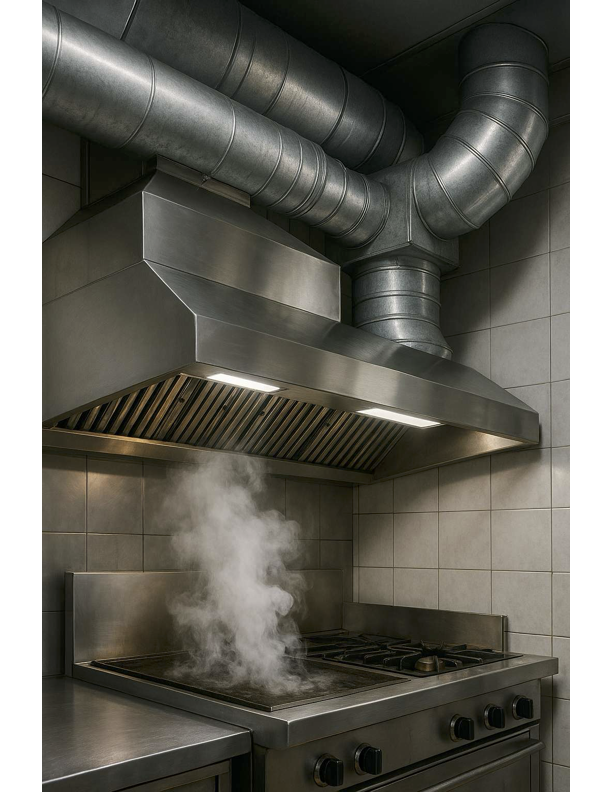Running a commercial kitchen isn’t just about food quality and speed—it’s also about safety and compliance. One of the most critical yet overlooked components of that equation? The kitchen hood system.
If your hood system isn’t doing its job, it’s not just a maintenance issue—it’s a fire hazard, a health code violation, and a business liability waiting to happen.
What Is a Commercial Kitchen Hood System?
A commercial kitchen hood system is the ventilation backbone of your cooking space. It’s designed to capture, contain, and remove heat, smoke, grease, steam, and airborne particles produced during cooking. A standard system includes:
-
Exhaust Hood (Canopy): Sits over the cooking equipment and captures contaminated air.
-
Filters: Trap grease and other particles.
-
Ductwork: Carries exhaust air out of the building.
-
Exhaust Fan: Pulls air through the system and out.
-
Make-Up Air Unit: Replaces the air that’s removed, maintaining air balance inside the kitchen.
Why They Matter
1. Fire Safety
The #1 reason for a hood system is fire prevention. Grease is highly flammable. Without regular filtration and airflow, that grease collects—and it only takes one flare-up to turn a busy shift into a disaster.
2. Code Compliance
Local fire marshals, health departments, and insurance companies all care about your ventilation system. Skipping inspections or ignoring repairs? Expect fines, insurance issues, or even shutdowns.
3. Air Quality and Comfort
Hot, smoky kitchens aren’t just unpleasant—they’re unsafe for your staff. A well-designed hood system helps control temperature, reduce odors, and ensure cleaner air for everyone in the building.
Types of Commercial Kitchen Hood Systems
There are two main categories:
-
Type I Hoods: Handle grease and smoke from fryers, grills, ovens, and ranges. They require grease filters and fire suppression systems.
-
Type II Hoods: Handle heat, steam, and moisture (think dishwashers or steamers). No grease = no fire suppression needed.
Choosing the wrong type can put your operation at risk, both functionally and legally.
Common Mistakes to Avoid
-
Improper installation. A good hood system is tailored to your kitchen layout and cooking methods. Don’t cut corners here.
-
Neglecting maintenance. Filters need cleaning. Ducts need inspections. Fire suppression systems need servicing. Regular maintenance isn’t optional—it’s essential.
-
Ignoring airflow balance. Pull out too much air without replacing it, and you create negative pressure that drags in dust, odors, and contaminants from everywhere.
Final Word
If you’re running a commercial kitchen, your hood system is not just a box with a fan. It’s a critical part of your operation’s safety, compliance, and comfort.
Whether you're opening a new spot, upgrading equipment, or just overdue for a check-up—don’t sleep on your ventilation system. The risk isn’t worth it.

